Spare Rib Temps: Barrel-cooked Glory
If it’s summer, it’s time to barbecue! And what comes to mind when you think about BBQ if not ribs?—specifically juicy, tender, smoky pork spare ribs. Outstanding taste and texture in spare ribs are not hard to master if you understand the basic principles of time and temperature during your cook. Here, we’ll give you the thermal knowledge you need to succeed and a dead-simple method for cooking ribs in an upright barrel smoker.
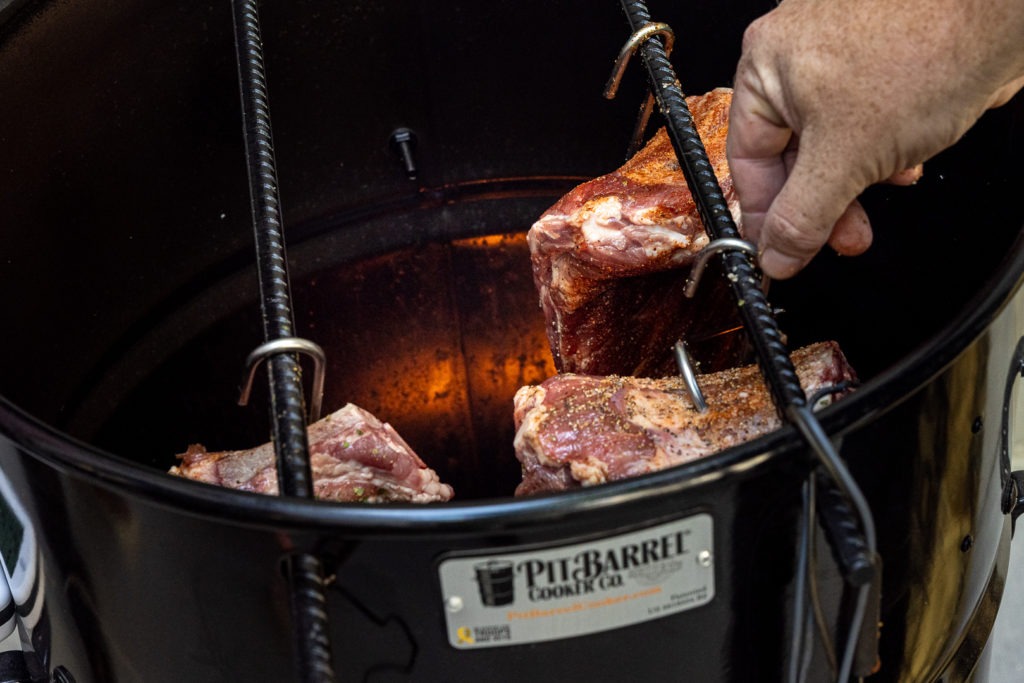
Spare-rib temperature: 195°F (91°C)
Spare Ribs…or St. Louis-Style Ribs?
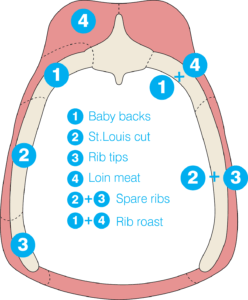
To begin with, what ribs are we talking about here? Pork ribs are divided into a few different cuts (see diagram to the right). The top ribs near the spine are baby back ribs. Baby backs are fairly lean, and need special attention so they don’t dry out. The spare ribs run the remaining length of the ribs near the pig’s fatty belly. Full spare ribs contain the brisket bone and surrounding meat and can weigh upward of 5 pounds. They’re huge. St. Louis-style spare ribs have the brisket bone and surrounding meat trimmed off for a more manageable cut in the range of 3 pounds. We used St. Louis-style ribs for our cook, which still count as part of the spare-rib cut. We find them much more manageable to cook.
Various methods for cooking ribs
There are as many different ways to cook ribs as there are pitmasters. You could, for instance, make Asian sticky ribs; or you could shoot for competition-style ribs. Some people go for a 3-2-1 method of cooking and wrapping. One great thing about ribs is that all of those methods are valid and have their own merits. (Especially the Asian sticky ribs.) Here we’re going to be covering one particular method of cooking ribs in a barrel smoker, but the thermal applications that we introduce will carry to other rib-cooking methods, too.
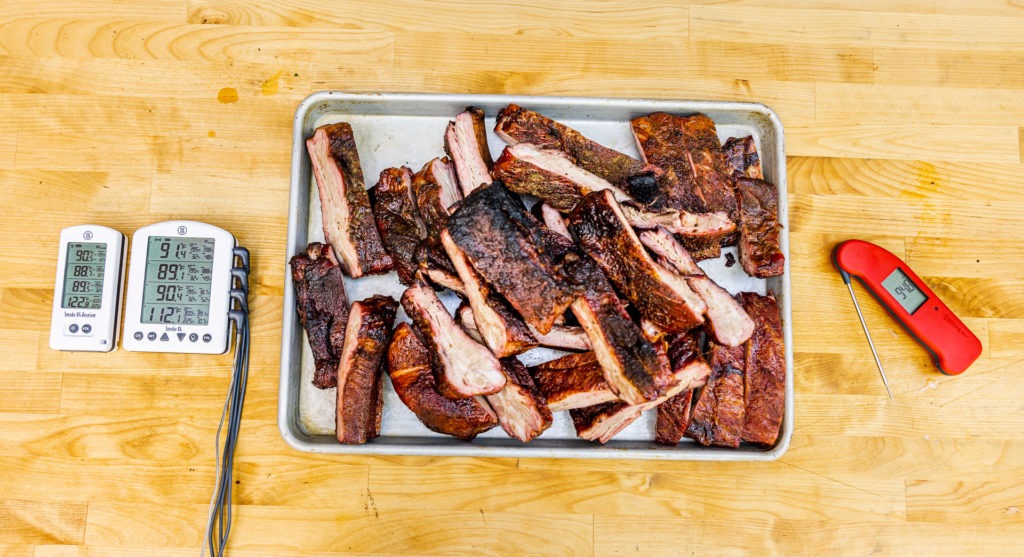
Cooking ribs in a barrel
Barrel cookers are notorious for being rib-cooking machines, and the reputation is deserved. Ribs cooked hanging in a smoker are easy to make and turn out great if you get your temps right. And cooking them is also fun. Sticking the hooks through the flesh between the bones (we used a double-hook method to make sure nobody fell into the fire) is incredibly satisfying, and pulling the glistening, smoky racks out of the barrel when they’re done is a true gastronomic joy.
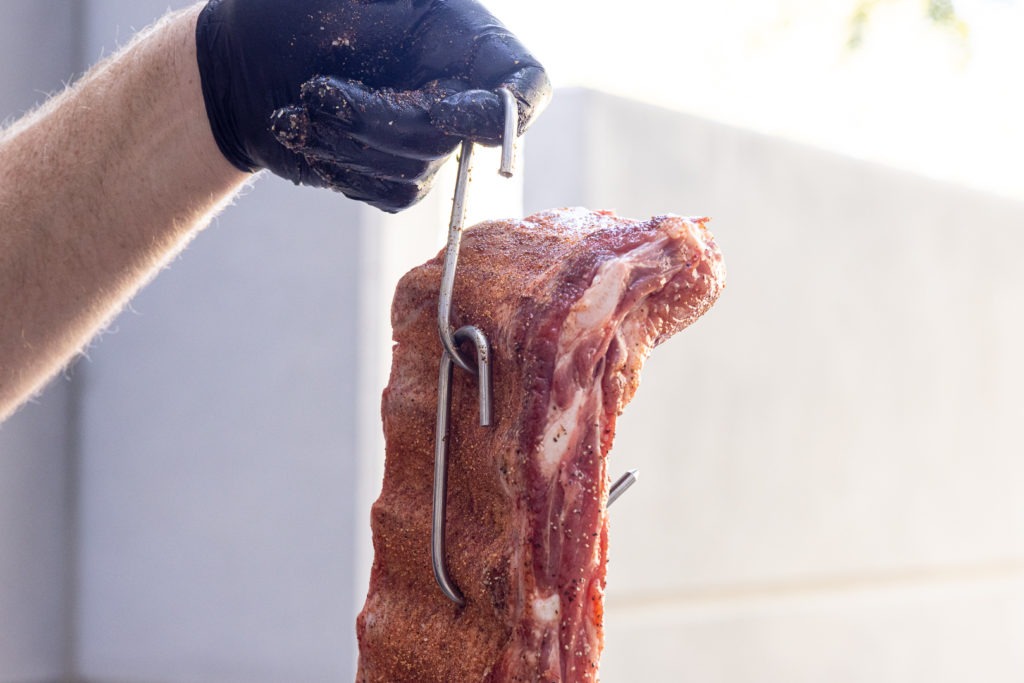
But how does it work? When you hang ribs in a barrel, their bottoms are obviously much, much closer to the fire than the tops, but somehow the lower ribs and the upper ribs all seem to cook at the same rate. What’s going on here?!?
A barrel-rib cook is a fascinating case study in applied thermodynamics. As the whole rack of ribs cooks in the heat of the barrel, juices begin to leak from the surface. At the top part of the rack, furthest from heat, very little juice runs over the surface, but the further down you go on the rack, the more accumulated juices are running over the surface. By the time you reach the bottom of the rack, the juices are much more plentiful. As the higher heat acts on those juices, it produces evaporative cooling.
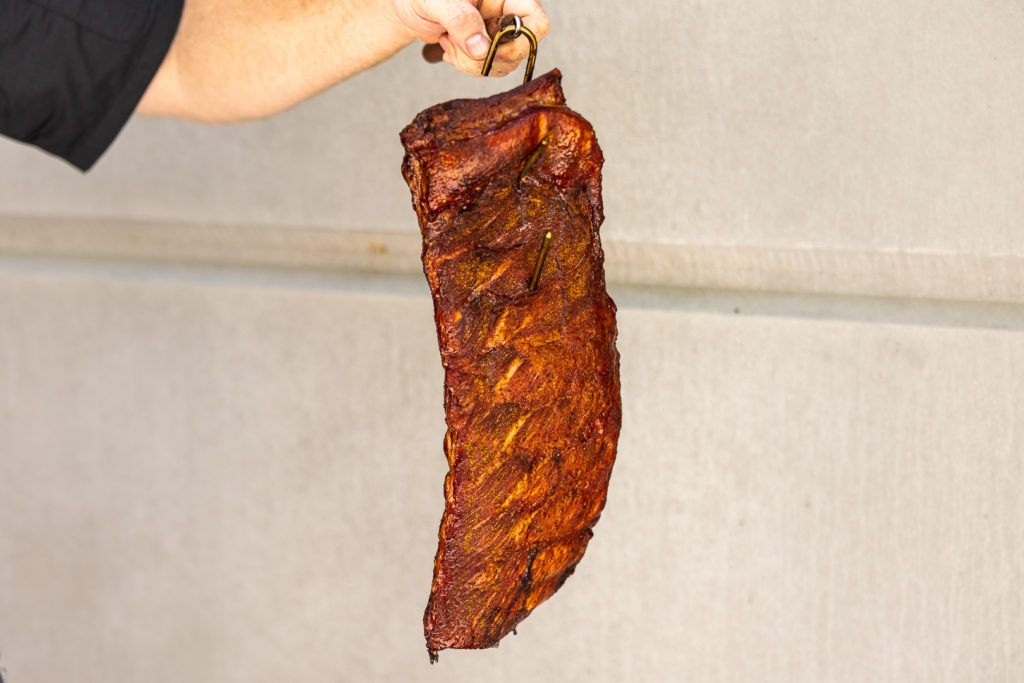
So even though the bottom ribs are only a few inches from your coal bed, they have a built-in water cooling system! The further from heat you get, the less cooling power the juices exert. The result, somehow, manages to balance out in just such a way that ribs cook nearly perfectly from end to end. And these ribs come out with amazing bark and a serious smoke ring. They’re good.
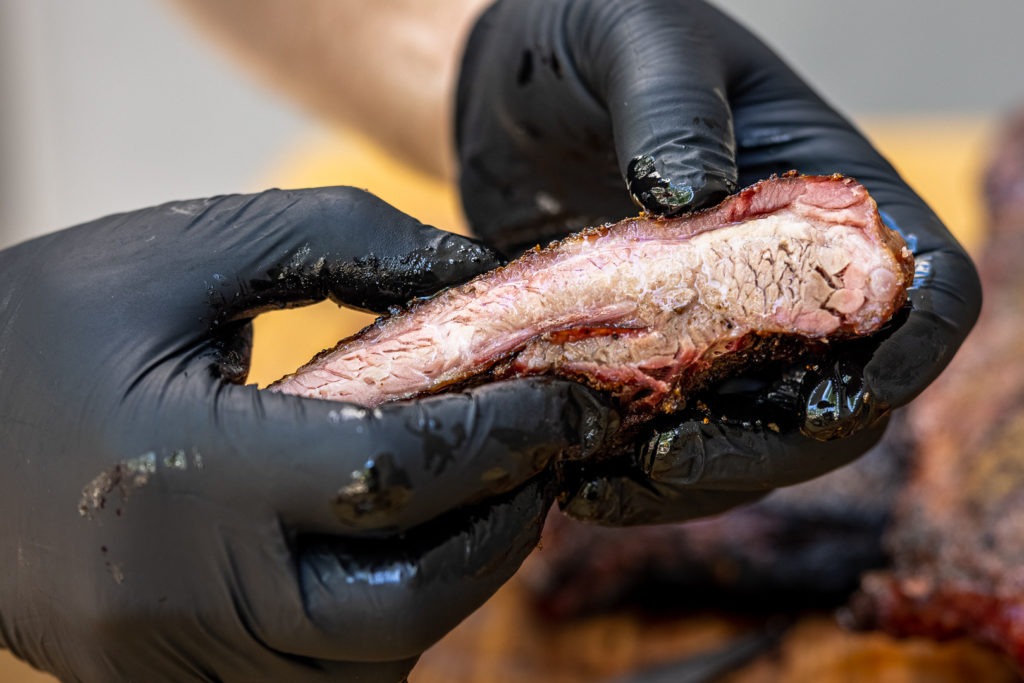
Thermal considerations for cooking ribs in a drum smoker
Some upright barrel cookers have a tendency to cook on the higher side of temps. One way to combat that high heat is to use larger lumps of charcoal, which burn more slowly, spreading the heat out more evenly throughout the cook. If you only have small lumps or briquettes, don’t overload your basket and don’t light too much of it up at once!
But we can use the knowledge that these cookers cook a little hotter to our advantage. In fact, cooking ribs a little hotter and faster is a great way to go! Monitor the air temp using a Smoke™ X4 to be sure that your pit temp stays in the range between 275°F and 300°F (135°C and 149°C). If you have a Billows™ BBQ Control Fan, by all means, use it!
Because we’ll be cooking on the high-temp side of things, and because the evaporation of juices from the surface of the meat is actually integral to the way a barrel cooker works, we forego any wrapping on these ribs. Give them a good rubdown with your favorite BBQ blend and hang them—probed with a leave-in probe thermometer, of course. The pull temp you’re looking for on these (or pretty much any) ribs is 195°F (91°C). You can go a little higher if you like them closer to fall-off-the-bone, but as they are suspended by their bones, I wouldn’t push my luck too far!
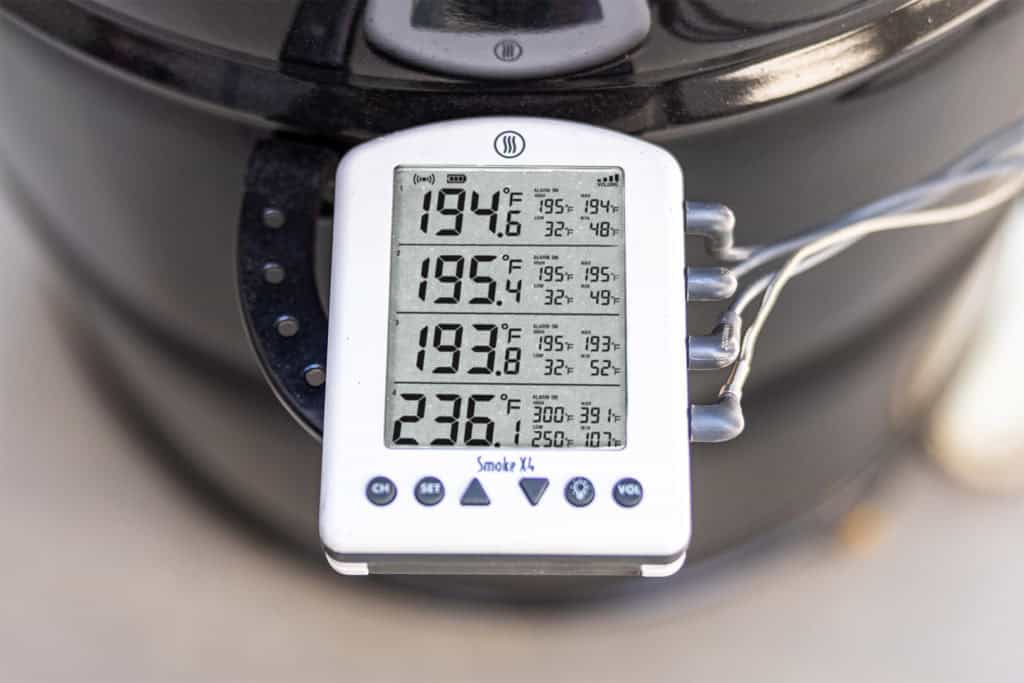
When the high-temp alarm sounds on your Smoke X4, verify the temp at a couple places in each rack with an instant-read thermometer like Thermapen® ONE. You’ll be surprised how even the temperatures are across the whole rack!
Cooking ribs like this is super easy and the results are juicy, tasty, and just straight-up beautiful. All it takes is a little temperature monitoring and you can churn out fantastic ribs with a minimum of effort. No wrapping! No saucing! And all in all, these will still take about the same amount of time as classic “3-2-1” ribs—somewhere around six hours. (As with all BBQ, you can give yourself a lot more time, and then let them rest in a cooler until it’s time to eat if you get done early.) Give them a try. I think you’ll love the results.
Print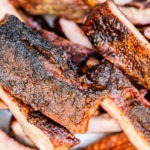
Barrel-cooked St. Louis-style ribs recipe
Description
The barest-bones, simple recipe for cooking ribs in a barrel smoker.
Ingredients
- 3 slabs St. Louis-style ribs
- BBQ rubs of your choice
Instructions
- Start a fire in your barrel smoker, larger lumps of charcoal are better. Use the air probe from your Smoke X4 to monitor the temp and try to hone it in around 275°F (135°C). Use Billows, if you have it.
- Remove the membrane from your ribs.
- We chose not to trim the meat on the back of the ribs so that they’d be a little thicker and resistant to the heat in the bottom of the barrel.
- Season your ribs somewhat generously with your favorite BBQ rubs.
- Insert the meat hooks into the slab of ribs. Counting from the sturdier end of the rack, insert one hook about 3 ribs down. Then insert a second hook two ribs further down. Hook the two hooks together.
- Try hanging your ribs in the barrel. If they still hang too low (ours were touching the coals), remove them and cut off a rib or two from the end.
- Insert a probe into each rack of ribs about halfway down the rack and hang them in the smoker. Set the high-temp alarm on your Smoke X4 for 195°F (91°C).
- If you like, you can spritz them every hour or so, but we didn’t.
- When the high-temp alarm sounds, verify the temp with your Thermapen.
- Remove the ribs from heat, let them rest for a few minutes at least, and serve them up!
Shop now for products used in this post:


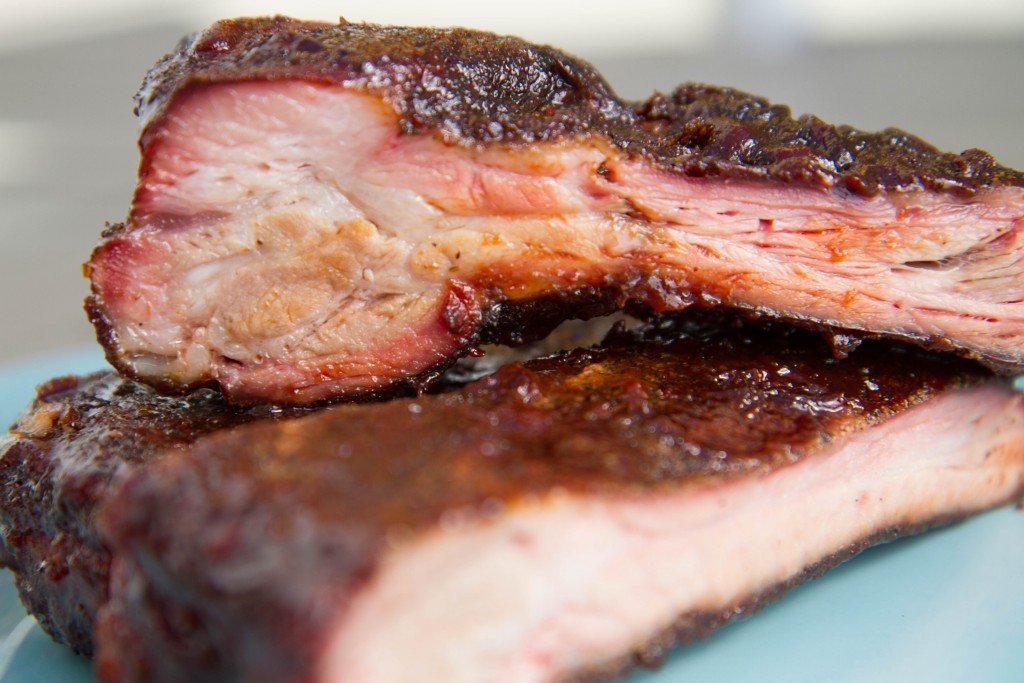
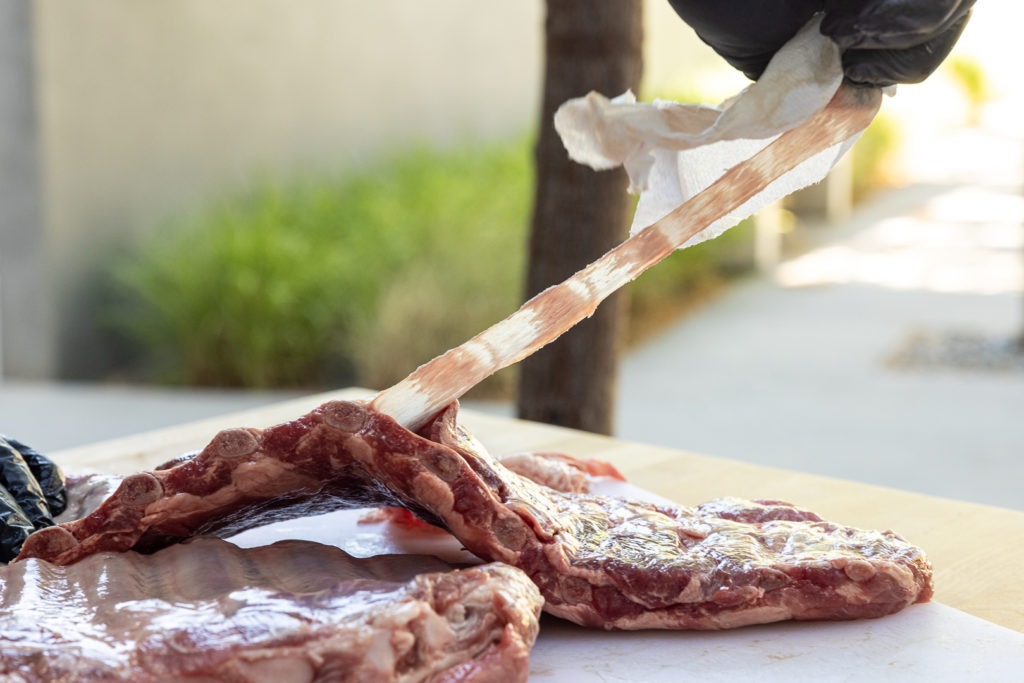
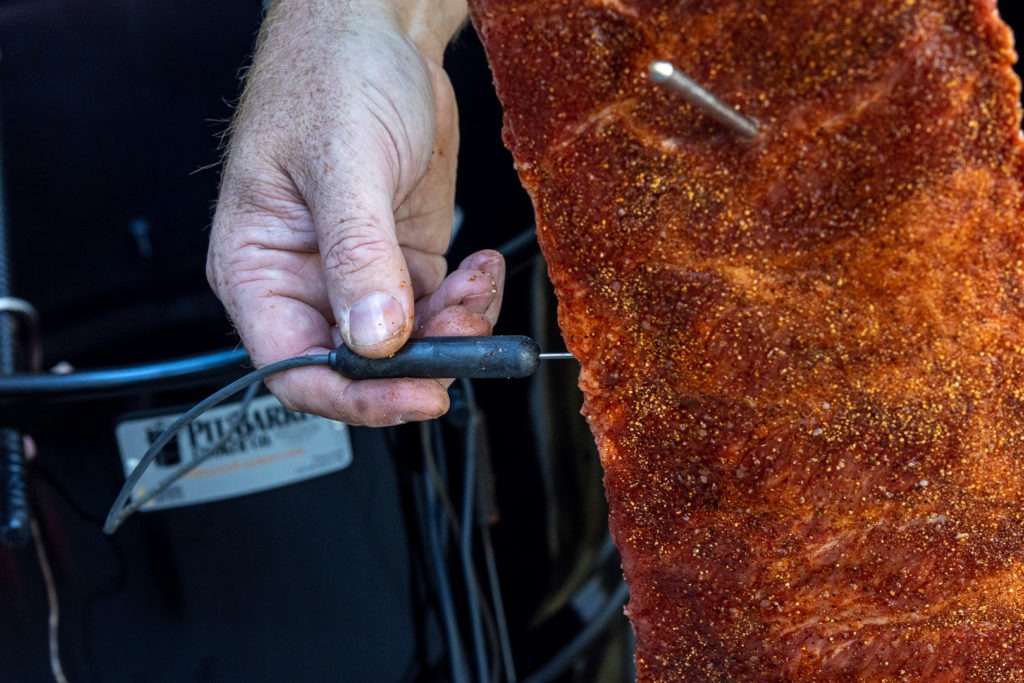
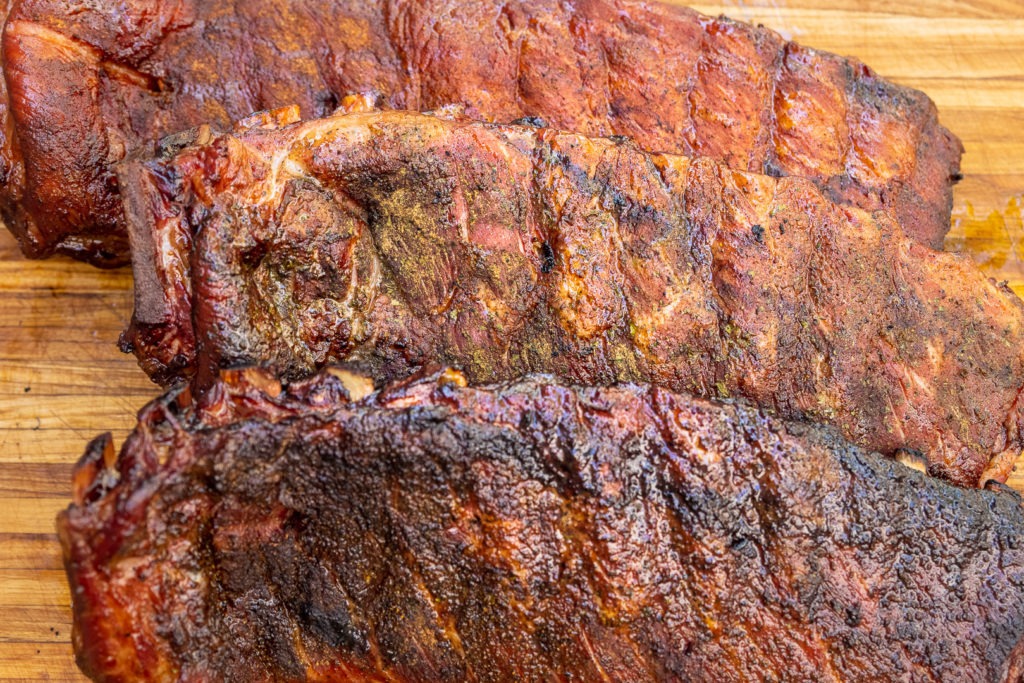

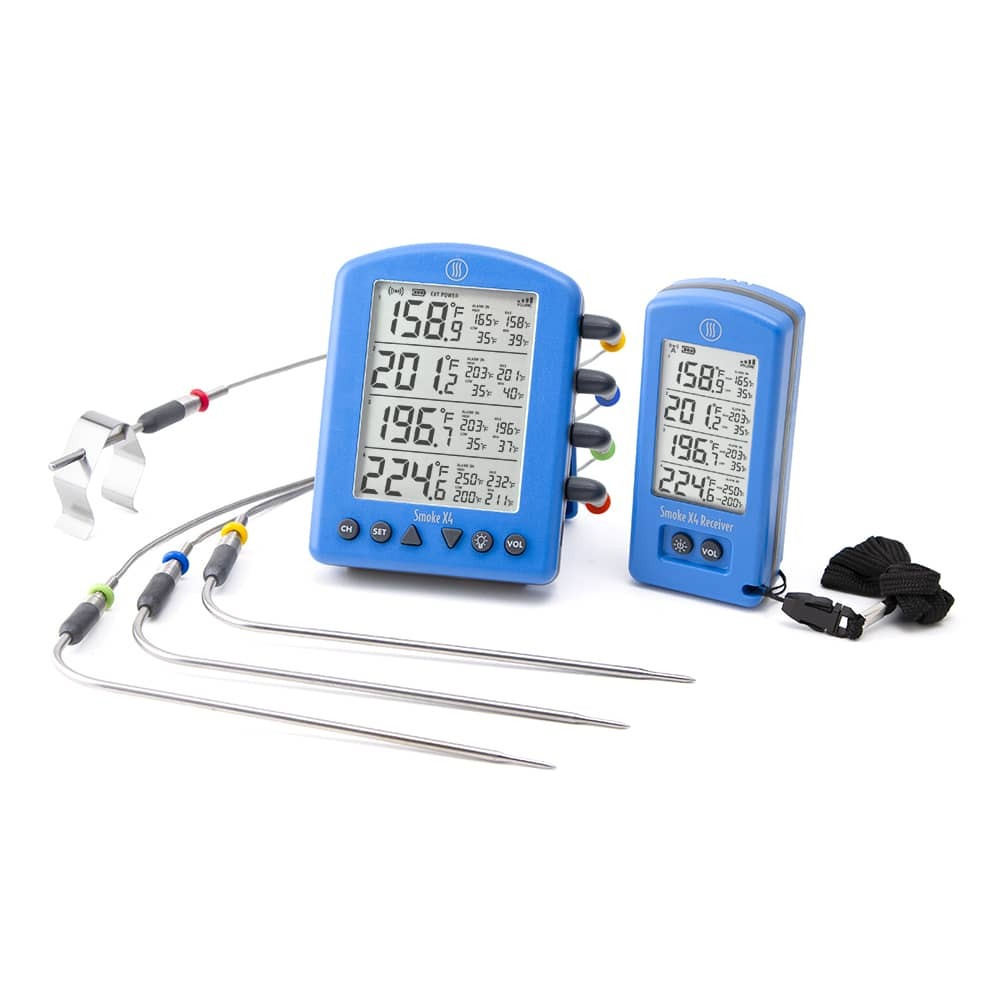
I have a thermapen. Cost was approx 90.00. You advertise a RT600C. Can you tell me the difference between the two? I’m thinking about purchasing a RT600C. I have a Dot and a Chef Alarm. I’m looking for a good timer alarm. Can you suggest one.
James,
Great question. The Thermapen is a professional Type K Thermocouple tool for the chef and home cook that is more than twice as fast and more accurate over a much wider range than the RT600C Pocket Thermometer. The Thermapen also features our best technology for both ease of use and extended durability. The RT600C features better technology and a faster response time than you’ll find in comparably priced housewares brand pocket digital thermometers, but it really doesn’t compare to the speed, accuracy and functionality of the Thermapen.
As far as a good alarm timer, it depends on what you’re looking for. Our Extra Big & Loud Timer has extra big digits and a really loud beep (adjustable volume). Our TimeStick and TimeStick Trio are not as big or loud but are easy to wear around your neck or slip in your pocket. Let us know what you buy!
Thanks!
-Kim
Can I follow this for beef chuck ribs too?
Scott,
Beef chuck short ribs are typically best cooked braised because of their high amount of fat, tough protein, and connective tissue. Short ribs need a longer cook and a higher internal temperature of 205°F to be tender and juicy. I think this topic could use more research—and a kitchen project!
Thanks,
-Kim
Thanks for the speedy service for sending the bbq ribs recipe.
Hey. When hanging ribs in a barrel there is no grate to attach the air probe unit for cooker temps. How did you guys do it?
We drape the probe over one of the rebars, letting it hang next to the ribs.
Can I hang a couple of racks of ribs and a whole chicken at the same time ?
Yes!
I like the idea of hanging the air probes. I have an offset with expanded metal grates. you can’t get the standard probe clips to fit very well. Someone should make a twist in silicone clip to fit expanded metal. (hint, hint)
An intriguing idea that I will pass on!
Hey. Any specific reason why I should not use this hanging method on baby backs? I plan on hanging 2 racks of spares and 2 racks of baby backs for game day. I figure that they may get done at different times so my smoke x4 and billows will be used. Any thoughts?
Should be fantastic, the technique is not unique to spares.